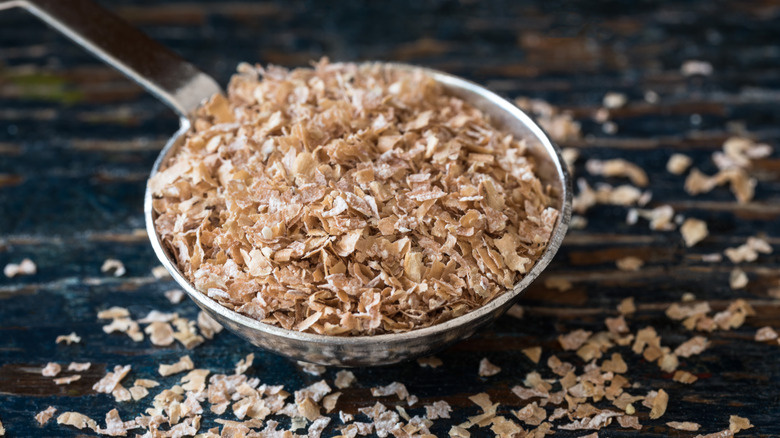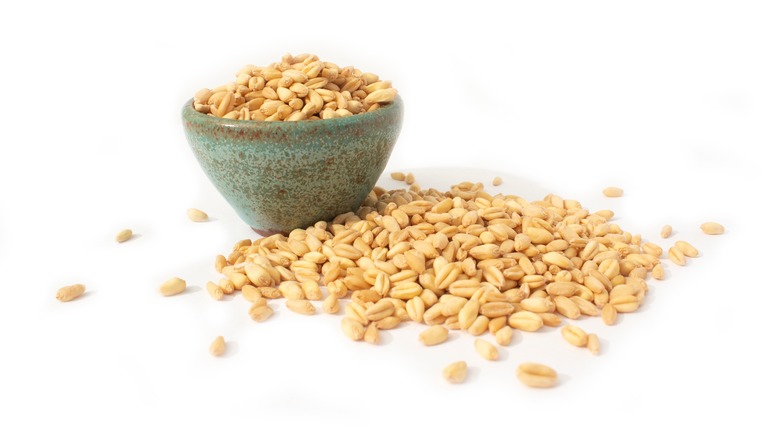Why Wheat Bran May Not Be Safe For Gluten-Free Diets
The word wheat may be synonymous with gluten, but when it comes to its bran form, it's not so cut-and-dry. In fact, whether or not wheat bran is safe for those that are gluten-free is a pretty contested topic. The answer varies from source to source and the argument is well-backed on both sides of the fence.
Gluten is a protein that is developed when wheat is mixed with a liquid and kneaded or mixed throughout. It doesn't inherently exist in the wheat itself. Two proteins must be activated to form gluten. So the theory is if the wheat is not moistened or kneaded, there may be no gluten present. But what constitutes hydration and kneading, and how much manipulation is needed to activate the gluten? If it's minimal, one would assume that just handling the wheat may release gluten. Therein lies the rub, literally.
Wheat bran is even believed to inhibit the formation of gluten because its rough edges will tear up the protein network as it is mixed. Yet there still is gluten present and it is unknown if the proteins can knit themselves back together, hence it's a catch-22. What constitutes gluten-free is up to interpretation when it comes to wheat bran, it seems.
While the jury may be out as to whether or not wheat bran is officially gluten-free, it's worth exploring the ins and outs of the nuances if you're keen on sticking to a sans-gluten way of eating.
What is wheat bran and wherein lies the gluten?
Wheat bran is simply a part of a grain of wheat. It is the tough outer layer of the kernel that is removed during the processing of the kernels into flour. It is considered a by-product and often used as animal feed. Or it is ground and used as an edible flour product jam-packed with fiber.
There are three parts to a kernel of wheat — the outer bran, the starchy endosperm, and the germ core. The endosperm is what is ground into flour that is used for baking and cooking and where the two proteins that make up gluten when combined and activated lie.
However, avoiding cross-contamination is next to impossible when separating the tiny parts of a kernel during processing. Wheat bran may contain lower amounts of gluten than other types of wheat flour, but it is not zero. For that reason, those who are sensitive to gluten or who have celiac disease should avoid wheat bran unless certified gluten-free.

